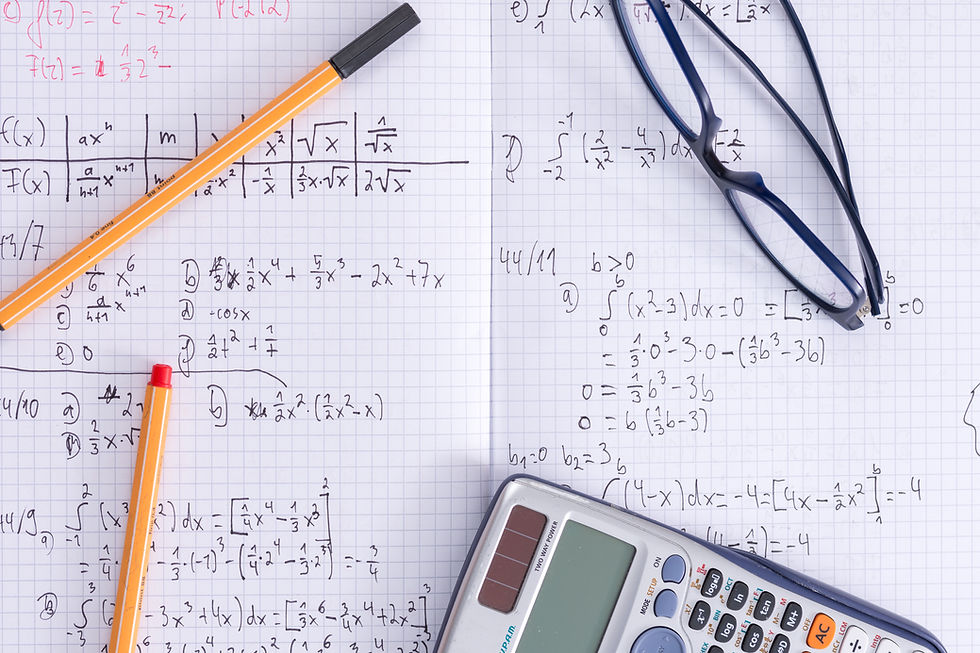Strategies For Achieving Your Target Score on the ACT Math Section
- Dave Bell
- Jan 14, 2021
- 3 min read
Updated: Feb 5, 2024

Many students who plan to take the ACT find the math section intimidating. Why? Well, for one thing, it’s math - ugh! For another, you may find yourself being tested on math concepts or rules you learned years ago or, worse, haven’t yet learned. Here are 2 simple strategies that may help calm your nerves and get you the score you desire.
Strategy One
The first strategy is to mentally divide the math test into 3 separate sections of 20 questions each. The first 20 questions include most of the easiest questions on the test, so this is an opportunity to (hopefully) rack up a lot of quick points early. If your math skills are fair to good, your goal should be to miss no more than 1 or 2 of the first 20 questions.
The second section, consisting of the next 20 questions, will include:
some easier questions
questions of medium difficulty
one or two really tough ones
Again, your performance will depend on your skill level, but a reasonable goal on this section is to get about 15 questions correct.
The final 20 questions will include most of the toughest questions. Hopefully, you have managed your time well and have some time left to tackle these problems. Unless you are an especially gifted math student, you will be doing well to get more than 10-12 of the last 20 questions correct.
Meeting these targets - at least 18 of the first 20, 15 of the second 20, and 12 of the final 20 correct - will typically be enough for a math score of 25, which would place you higher in math than 79th percentile of all students taking the ACT.

Strategy Two
Another strategy, which can be used in conjunction with the first one, is to take the entire math section in 2 "passes." In the first pass through the test, you should:
Attempt all the easy questions on the entire test
Make a note of (but do not work on) the questions that appear gettable with some time and effort
Guess on the problems that look really challenging. (Make sure to put marks in the test booklet next to the medium and "guess" questions, so you can easily find them on your second pass.)
This approach will ensure that you get to all the easy questions and at least fill in bubbles for the really difficult ones.
On your second pass through the test:
Try to answer all the medium problems that you noted earlier.
Go back and try the really difficult problems (if you have time.)
As noted above, a 25 is a good ACT math score because it means you essentially scored higher than 4 out of every 5 students taking the ACT. Many students consider a 30 or above a great score. To achieve a 30, you can miss no more than 6 or 7 questions on the entire test. For a 33, you can miss about 4 questions, and for a perfect score of 36, you usually need to get all 60 questions right!
Whatever strategy or approach you use on the math ACT, remember: The more you practice, the more you are likely to achieve the score you desire! And the key to improving your score is not just to practice, but to engage in quality practice. Quality practice means:
Always score your tests, so you can see (hopefully) improvement.
Focus mostly on your misses because they tell you where you need to improve.
Try to figure out on your own why you missed a question before you look at the answer explanation in the test prep book.
Look for patterns in your misses - that is, the kinds of questions you miss repeatedly. That’s where you should focus extra effort.
Rather than think in terms of your “scaled” score (1-36 on the ACT), you may find it helpful to think in terms of, “how many more questions do I need to get right to get the score I want?”
Dave Bell, who organizes ACT and SAT workshops for area high schools and not-for-profit organizations, can be reached for answers to your questions at Dave@thewholekid.com.
